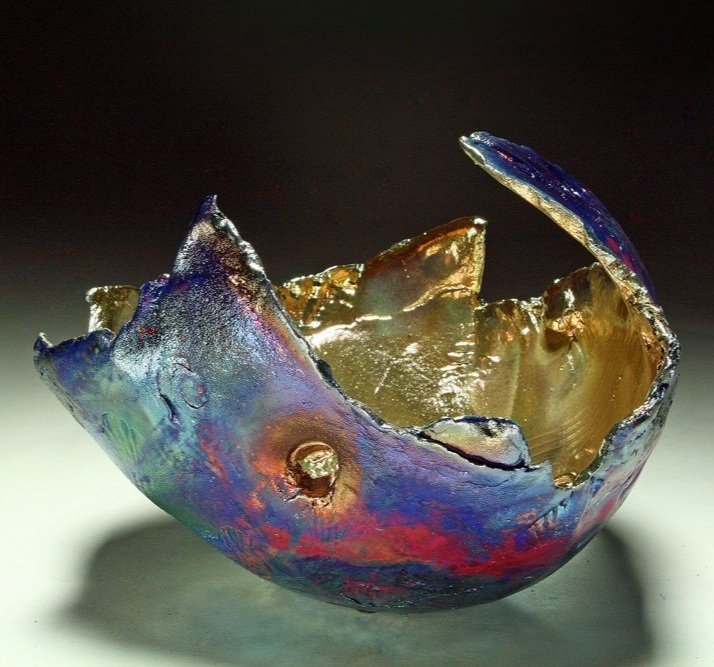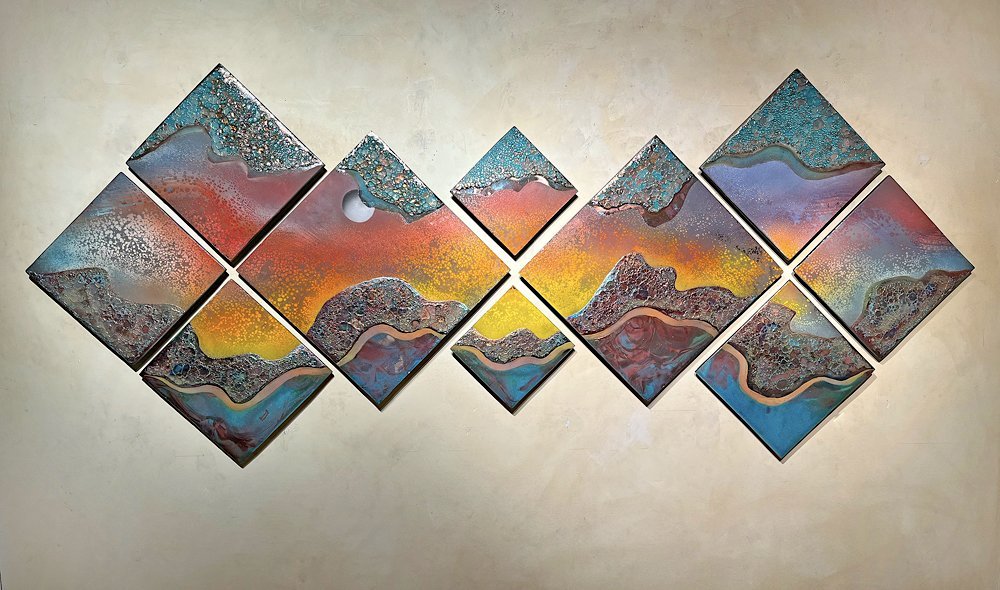Find what you're looking for:
Discover the Beauty of Raku Pottery by Steven Forbes-deSoule
Raku History
What was first developed as ceremonial tea ware for Zen Buddhist Masters in the 16th century, raku pottery was originally prized in its simplicity and its intentional avoidance of opulence, both of which were important to the Zen philosophy. The word “raku” conveys the enjoyment of freedom and thus raku pottery was intentionally built without function or utility. As a low-fired style of pottery, it is within these subtleties that Zen Masters found the evasive, yet robust beauty of raku pottery and it is this beauty that is its only worth. It is believed that the spirit of the maker is incorporated into the raku shape and is therefore revealed naked (unglazed) at the foot of each pottery piece. It is said that if we remain alert to ourselves, in examining the raku form, we will recognize our own spirit and meaning.
PRESS + NEWS
Flared Raku Bowl
by Steven Forbes-deSoule
American Raku Pottery
The technique that I use is a unique and magical form of pottery. American raku pottery dates to 1960 when a famous ceramic artist named Paul Soldner discovered the exciting results possible when a pot was placed in combustible materials when removed from the kiln. It differentiates from Japanese raku in that it focuses primarily on this post firing reduction. While both techniques embody the spirit of spontaneity, removing a piece from the kiln and letting it smolder in a combustible makes American raku pottery all the more exciting and unpredictable. There is nothing quite like pulling a glowing hot vessel or sculpture from the kiln and placing it in a metal container that holds combustibles. As soon as you cover the container and smother the flames, a reduction chamber is created and it is at this moment that something incredible happens... When I open the reduction chamber about 30 minutes later, it’s like being a kid at Christmas as I never know for sure what to expect. I was hooked on this process nearly 40 years ago and have fired using raku exclusively ever since. During that time I estimate I’ve fired over 7000 raku kilns!
The most common combustibles that I use in creating this post firing reduction are organic materials such as leaves, straw, sawdust, or paper. I prefer to use newspaper, as I can control the exact amount of combustibles in the reduction chamber. The glazes are most often put onto the raku pot before it is fired. The metallics that I most often use in the glazes are copper, silver, cobalt and chrome. Once I apply them to each pottery piece, they melt in the firing and leave some truly spectacular results. I may also use the glazes to enhance the underlying design or texture of the raku piece. The colors of the glaze and the crackle are dependent on the amount of reduction (of oxygen) allowed during the post firing reduction. As oxygen is reduced, the reaction causes the oxygen to be pulled from the glazes and clay, leaving behind a brilliant mix of beautifully colored raku pottery. The results are always serendipitous and each piece or sculpture I pull from the container is truly one of a kind! For a closer look at my raku process, please see my raku firing page.
Available Raku Work & Studio in NC
My online pottery store features all my available raku pottery for sale where you can see the complete range of my work including wall pieces, sculpture, vessels and ikebana. Please click on a category below for more information. New decorative art pieces pieces are added frequently and all sold pieces are marked as such. I invite you to come see my work in person, on display at Ariel Gallery in downtown Asheville, NC or you can reach out to me or Art Connections Tours for a tour of my studio in Weaverville, NC.
My raku vessels were created with colors in mind. Using my own glazes and underglazed I can fire a raku pottery piece over and over again to achieve the colors I am looking for. These pieces beautifully reflect the intricate details of my firing process.
With a unique mix of subtle designs and beautiful colors I am able to add my personal approach to home decor with my raku sculpture pieces. To find the colors you are looking for with raku pottery please contact me regarding commissioned pieces.
These intricate raku wall pieces highlight the beauty and textures created when experimenting with my different raku pottery glazes.. Their earthly and natural formations, designs and vibrant colors will turn your wall into a source of inspiration.
I have fired these raku ikebana pieces using special glazes that coordinate well with the natural vibrancy of various flowers. These special raku pottery pieces embody this wonderful art form and are sure to give an extra bit of life to any floral arrangement.






























